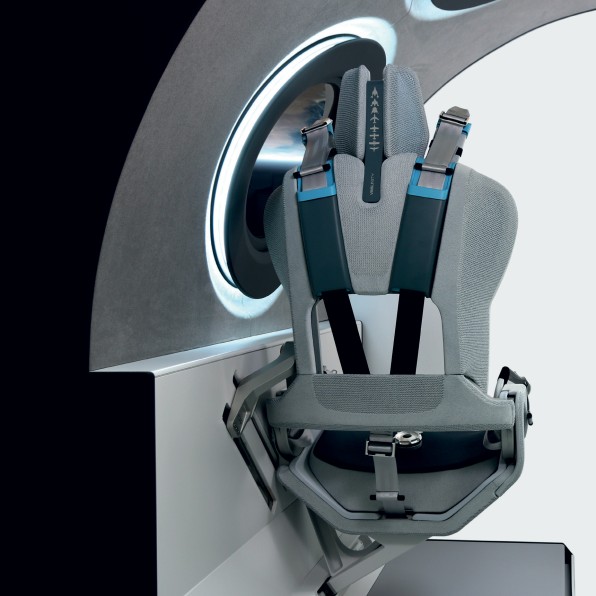The commercial space race is heating up. Today Virgin Galactic is releasing the design of the interior cabin of its SpaceShipTwo, a space vehicle the company plans to use to take paying customers—tickets start at $250,000—on a suborbital journey outside of Earth’s atmosphere and back. For aspiring amateur astronauts, it’s a vision of what it might actually look like to take that trip toward the stars.
Designed in collaboration with London-based design agency Seymourpowell, the cabin is an attempt to set the standard for this particular form of high-end travel. Jeremy White, director of transport at Seymourpowell, says it’s like creating a whole new space aesthetic. “We had the rare opportunity to have the freedom to do that,” he says. And though the agency has experience designing interiors of private jets and details on cars for Ford, White says it was important to start this assignment on a clean slate. “We sort of purposely didn’t look to aviation or automotive for inspiration.”

The cabin is not wholly unfamiliar, despite the designers’ blank slate. Something like a small-sized jet, the tubular interior space has the dimensions familiar to any commercial air traveler. But the interior has been completely rethought to accommodate the unique conditions of flying at great speeds into zero gravity.

Customer feedback and ideas were used to guide the physical space and the flight experience, says Stephen Attenborough, commercial director at Virgin Galactic. Roughly 600 people have already reserved flights from the company. Their expectations for the flight and motivations for signing up—from childhood aspirations of working at NASA to space dreams straight out of science fiction—have been used to inform the design. “We have effectively built this spaceship from the inside out,” Attenborough says.
The customers will also be guiding the physical infrastructure of the cabin. Seats made from aluminum and carbon fiber will be adjusted specifically to fit each passenger’s body measurements, ensuring safe harnessing against the flight’s high gravitational forces, expected to peak at roughly four times as strong as what’s experienced on Earth. “Unlike other transportation environments where we don’t know the customers or who’s going to come through the door, we know the customers well,” White says.
While much of the design was geared around creating a safe and enjoyable experience for passengers, there were also some practicalities to contend with. For example, unlike an unbuckled car seatbelt that recoils back into its casing, the five-point harnesses that open to release passengers during the flight’s zero-gravity portion raised the danger of what White calls “kelping”—wavy belts drifting off and impeding the floating experience. Through their own research trips on zero-gravity parabolic flights, the designers developed a mechanism to control the harnesses and prevent the kelping. Though the cabin designs are being released today, the mechanism behind this small but important edge in the commercial space race will remain undisclosed, White says. “That’s top secret.”








 User Center
User Center My Training Class
My Training Class Feedback
Feedback












Comments
Something to say?
Log in or Sign up for free